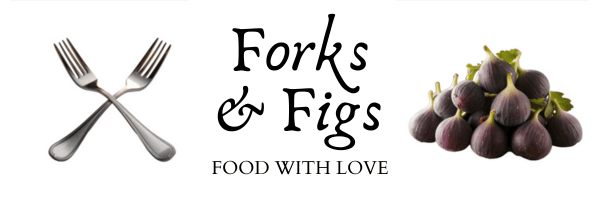Aromatic Burmese Pork Curry Recipe From Myanmar

I’m about to share something that’ll transform your weeknight dinner game, and honestly, it might just become your new obsession. This aromatic Burmese pork curry from Myanmar isn’t your typical curry – it’s got this incredible depth that comes from a perfect balance of spices and techniques that most people overlook. The secret lies in how we build those layers of flavor, and trust me, once you understand this method, you’ll wonder why you’ve been making curry any other way.
Why You’ll Love this Aromatic Burmese Pork Curry
Every single bite of this Burmese pork curry delivers layers of flavor that’ll make your taste buds do a happy dance. I’m talking about tender pork swimming in a rich, aromatic sauce that hits all the right notes.
What sets this apart? The complex spice blend creates incredible depth without overwhelming heat. You’ll get warmth from the chilies, earthiness from turmeric, and that perfect sweet-sour balance from tamarind and sugar.
The best part? It’s surprisingly approachable for home cooks. No exotic ingredients you can’t pronounce or techniques that require culinary school training.
What Ingredients are in Aromatic Burmese Pork Curry?
This aromatic Burmese pork curry brings together ingredients that create something truly magical in your kitchen. The beauty lies in how everyday pantry staples transform into complex, layered flavors that taste like you’ve been perfecting this recipe for decades.
Most of these ingredients are probably sitting in your spice cabinet or local grocery store right now. No need to hunt down specialty items from three different markets, which honestly makes my weeknight dinner planning so much easier.
Ingredients:
- 2 lbs pork shoulder, diced
- 1 white onion, pureed
- 3 garlic cloves, pureed
- 2 inches fresh ginger, pureed
- 3 fresh serrano chilies, pureed
- 1 large tomato, chopped
- 1 tbsp red chili powder
- 2 tsp paprika
- 1 tsp salt
- 1 tsp sugar
- 2 tsp turmeric
- 2 tbsp Thai fish sauce
- 1 tbsp dark soy sauce
- 1 tbsp tamarind paste (reconstituted)
- 1 stalk lemongrass
- 2 cups water
- ½ cup vegetable oil
- ¼ cup cilantro leaves, chopped (for garnish)
- ¼ cup fried shallots (for garnish)
Ingredient Notes and Considerations
Pork shoulder works best here because it breaks down beautifully during that long simmer, becoming fork-tender without drying out. Don’t even think about using lean cuts like tenderloin, they’ll just turn into expensive rubber.
The pureed aromatics create the flavor foundation, so take time to get them smooth. A food processor makes quick work of this, though a good blender works too. If you’re stuck with just a knife, mince everything as finely as your patience allows.
Tamarind paste might require a trip to an Asian grocery store, but it’s worth seeking out. The tangy, slightly sweet flavor is irreplaceable in this dish. Look for the paste variety rather than whole tamarind pods, unless you enjoy spending your afternoon wrestling with sticky fruit.
Fish sauce and dark soy sauce bring that umami depth that makes everything taste more like itself, if that makes sense. Regular soy sauce can pinch-hit for dark soy, though you’ll miss some of that rich color and slightly sweeter flavor.
Fresh lemongrass adds a subtle citrusy note that brightens the whole curry. Bruise the stalk with the flat side of your knife before adding it, this releases more of those lovely oils.
How to Make this Aromatic Burmese Pork Curry

Starting this curry feels almost meditative once you get into the rhythm. The key is building those flavors layer by layer, which sounds fancy but really just means adding things in the right order and letting each step do its thing.
Building the Aromatic Base
Heat that ½ cup of vegetable oil in a heavy-bottomed pot over medium heat. I know it seems like a lot of oil, but trust the process here.
Add your 1 pureed white onion and let it cook until it starts turning golden and smells absolutely incredible. This takes about 5-7 minutes, and honestly, this is where the magic starts happening.
Next comes the flavor trinity: add your 2 inches of pureed ginger, 3 pureed garlic cloves, and those 3 pureed serrano chilies. Stir everything together and cook for another 2-3 minutes. Your kitchen should smell like the best Indian restaurant you’ve ever been to right about now.
Blooming the Spices
Time to add the spice mixture, and this is where things get really aromatic. Stir in that 1 tablespoon of red chili powder, 2 teaspoons of turmeric, 2 teaspoons of paprika, 1 teaspoon of sugar, and 1 teaspoon of salt.
Add your 1 chopped large tomato too. Everything gets stirred together and cooked for about 2 minutes until the spices smell toasted and the tomato starts breaking down.
Don’t worry if it looks a bit paste-like at this stage, that’s exactly what we want. The spices need this time to bloom and lose any raw, bitter edges they might have.
Adding the Pork and Liquid
Now for the star of the show: add those 2 pounds of diced pork shoulder right into the pot. Stir everything around so the pork gets completely coated with all those beautiful aromatics.
Let it brown for about 5 minutes, stirring occasionally.
Pour in your 2 cups of water and add that 1 stalk of lemongrass. Remember to bruise the lemongrass first by giving it a good whack with the flat side of your knife.
Bring the whole thing to a boil, then reduce the heat and let it simmer.
The Long, Rewarding Simmer
Here’s where patience pays off. Let this curry simmer for about 40 minutes, stirring occasionally, until the pork becomes fork-tender and the sauce thickens nicely.
The liquid should reduce by about half, and when you drag your spoon across the bottom of the pot, it should leave a trail for a second before the sauce flows back together.
Final Flavor Additions
In the last few minutes, stir in your 1 tablespoon of reconstituted tamarind paste, 2 tablespoons of Thai fish sauce, and 1 tablespoon of dark soy sauce.
These finishing touches add that perfect balance of tangy, salty, and slightly sweet flavors that make Burmese cuisine so distinctive.
Let everything simmer together for just 2-3 more minutes to marry those final flavors. Remove that lemongrass stalk before serving, unless you enjoy watching your dinner guests try to chew through fibrous grass.
Garnish and Serve
Ladle the curry into bowls and top with your ¼ cup of chopped cilantro leaves and ¼ cup of fried shallots.
The contrast of fresh herbs and crispy shallots against that rich, complex curry is what dreams are made of. Serve it over steamed rice because you’ll definitely want something to soak up every last drop of that incredible sauce.
The whole process takes about an hour start to finish, but most of that’s hands-off simmering time. Perfect for when you want something that tastes like you’ve been slaving away all day but really just requires some chopping and patience.
Aromatic Burmese Pork Curry Substitutions and Variations
One of my favorite things about this curry is how forgiving it’s when you’re missing an ingredient or want to switch things up based on what’s hanging out in your pantry.
No pork shoulder? I’ll use chicken thighs or beef chuck instead. Missing serrano chilies? Jalapeños work perfectly fine. Can’t find tamarind paste? A squeeze of lime juice adds that tangy punch you’re after.
Want more heat? Double the chilies. Prefer it milder? Skip them entirely.
No lemongrass? It’s still delicious without it, though you’ll miss that citrusy aroma that makes your kitchen smell incredible.
What to Serve with Aromatic Burmese Pork Curry
While the curry itself is the star of the show, I’d be doing you a disservice if I didn’t talk about what makes it shine even brighter on your plate.
Steamed jasmine rice is your best friend here. It soaks up that gorgeous, spice-laden sauce like nobody’s business. I always make extra rice because trust me, you’ll want every drop.
Fresh cucumber slices cut through the richness beautifully, while crispy fried shallots add textural magic.
A simple cabbage slaw with lime juice? Pure genius. Don’t forget warm naan or flatbread for serious sauce-scooping action.
Final Thoughts
There’s something deeply satisfying about mastering a curry that takes you straight to the bustling streets of Yangon without ever leaving your kitchen.
This recipe isn’t just about feeding yourself, it’s about connecting with centuries of Burmese tradition.
I love how the tamarind adds that perfect sour note while the fish sauce brings umami depth.
Sure, tracking down all these ingredients might require a trip to an Asian market, but trust me, it’s worth the adventure.
This curry gets better overnight, so don’t worry if you make too much.

Burmese Pork Curry
Ingredients
- 2 lbs pork shoulder diced
- 1 white onion pureed
- 3 garlic cloves pureed
- 2 inches ginger pureed
- 3 fresh serrano chilies pureed
- 1 large tomato chopped
- 1 tbsp red chili powder
- 2 tsp paprika
- 1 tsp salt
- 1 tsp sugar
- 2 tsp turmeric
- 2 tbsp Thai fish sauce
- 1 tbsp dark soy sauce
- 1 tbsp tamarind paste reconstituted
- 1 stalk lemongrass
- 2 cups water
- ½ cup vegetable oil
- ¼ cup cilantro leaves chopped (garnish)
- ¼ cup fried shallots garnish
Instructions
- Heat oil in a heavy-bottomed pot over medium heat and add onion puree. Cook for 5-7 minutes until fragrant.
- Add ginger, garlic, and chili purees. Stir constantly for 3-4 minutes until aromatic.
- Stir in chili powder, turmeric, paprika, sugar, salt, and chopped tomato. Cook for 2-3 minutes.
- Add pork cubes and water, then add lemongrass stalk.
- Bring to a boil, then reduce heat and simmer for approximately 40 minutes until pork is tender and sauce has thickened.
- Mix tamarind paste, soy sauce, and fish sauce together, then stir into curry.
- Remove lemongrass stalk, garnish with cilantro and fried shallots, and serve with steamed rice.
Notes
Nutrition
Frequently Asked Questions
Can I Make This Burmese Pork Curry in a Slow Cooker?
Yes, you can adapt this curry for a slow cooker. I’d sauté the aromatics first, then transfer everything to your slow cooker and cook on low for 6-8 hours until tender.
How Long Does Leftover Burmese Pork Curry Last in the Refrigerator?
I’d store leftover Burmese pork curry in the refrigerator for up to four days in airtight containers. I’ll reheat portions thoroughly before serving, and I can freeze it for longer storage.
Can I Freeze This Pork Curry for Meal Prep?
I’d recommend freezing this curry in portion-sized containers for up to three months. The flavors actually improve after freezing and thawing. Just reheat gently on the stovetop with a splash of water.
What’s the Difference Between Burmese Curry and Thai or Indian Curry?
I’ll explain the key differences. Burmese curry uses turmeric and minimal coconut milk, creating earthier flavors. Thai curries are coconut-heavy and brighter, while Indian curries feature complex spice blends and varied regional styles.
Can I Reduce the Spice Level Without Losing Authentic Flavor?
I’d reduce the serrano chilies to one or two and use less chili powder while keeping all other spices intact. You’ll maintain Burmese curry’s earthy, aromatic character without overwhelming heat.




